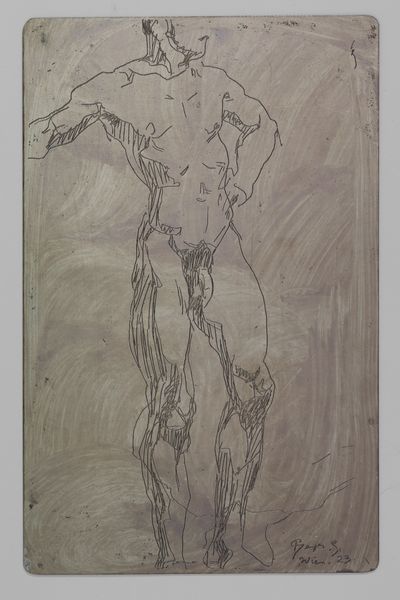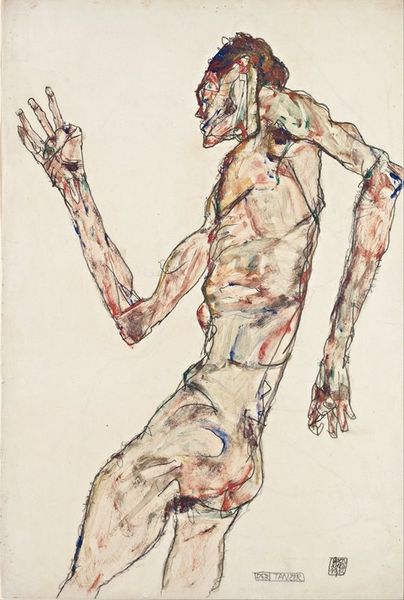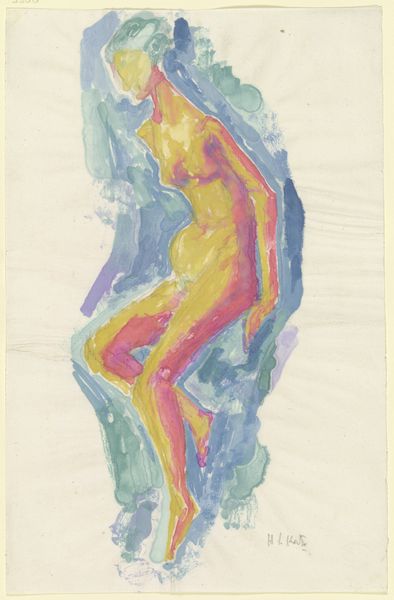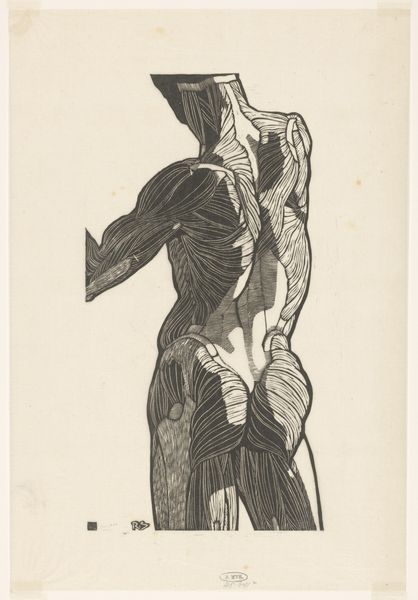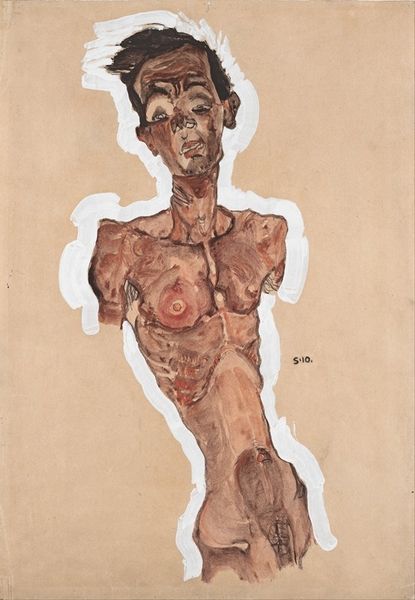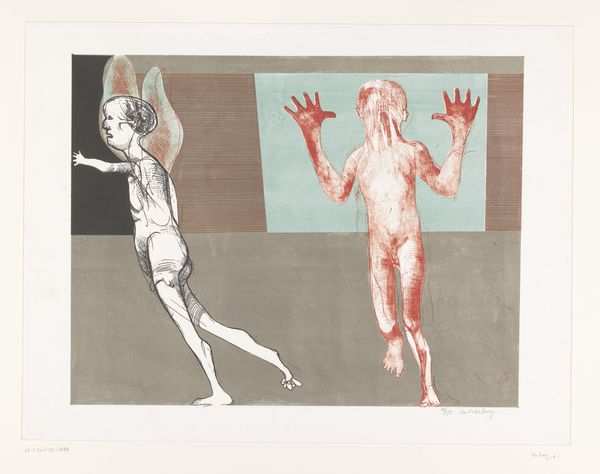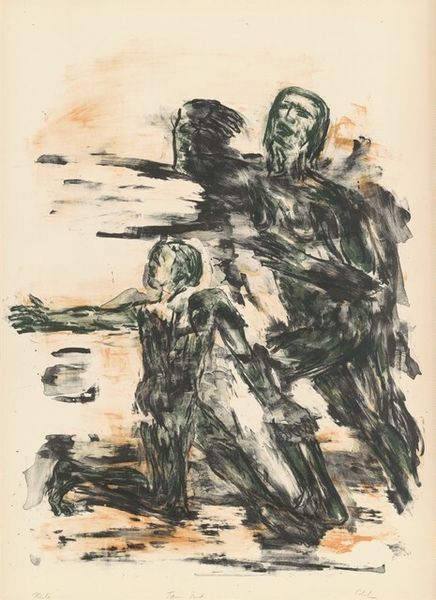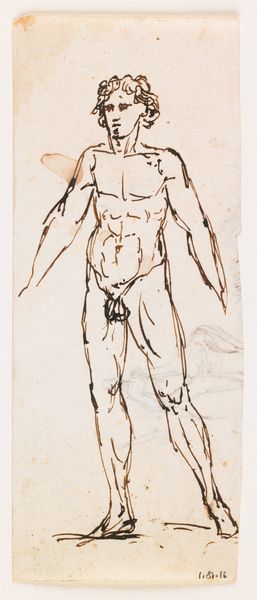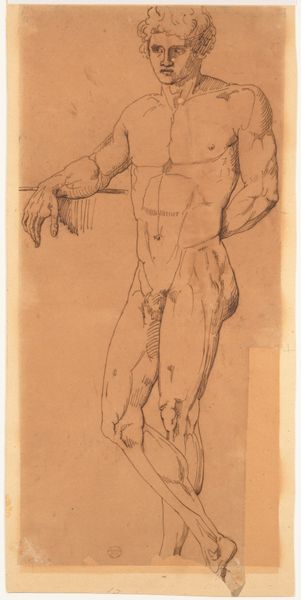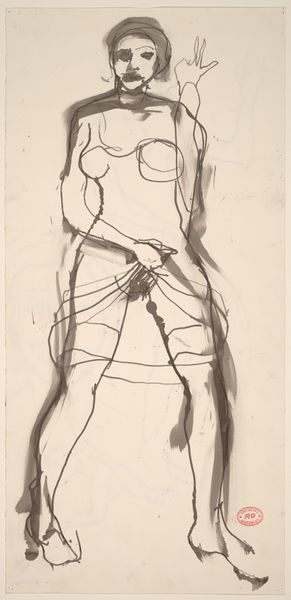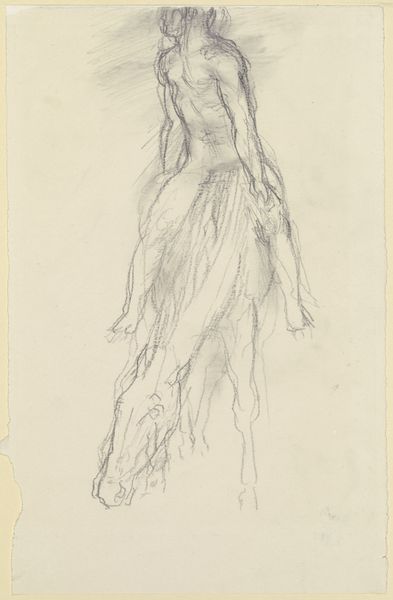
drawing, watercolor
#
portrait
#
drawing
#
figuration
#
watercolor
#
symbolism
Dimensions: 40 x 19.5 cm
Copyright: Public domain
Editor: We’re looking at Ferdinand Hodler’s “Left Border Woman,” a watercolor and drawing from 1913. There's a sense of fragility about her, almost like a study of vulnerability. How do you interpret this work in terms of its historical and social context? Curator: Hodler, working within Symbolism, often used the human figure to express universal emotions and anxieties. Considering this was painted just before the First World War, I see her pose, her raised arms, as an expression of the widespread feeling of uncertainty. Could it be that he’s portraying the pre-war apprehension palpable in Europe at the time? Notice also the visible grid, indicating it’s a study - potentially for a larger, unrealized piece. Editor: That’s interesting about the grid. So it wasn't meant as a finished piece in itself? Curator: Not necessarily, but the rawness adds to its power. Symbolism frequently embraced a subjective truth. By not concealing the preparatory framework, is Hodler revealing the constructed nature of emotion, of image-making, in a period of rapid social upheaval? It reflects the anxieties of representation itself. Editor: I hadn't considered the connection to anxieties about representation itself! Seeing her as a reflection of broader societal feelings makes the artwork far more resonant. Thanks for that perspective. Curator: Indeed. It's crucial to recognize how an artist’s individual anxieties might mirror and inform larger cultural ones, and how this shapes public reception to their art. Food for thought.
Comments
No comments
Be the first to comment and join the conversation on the ultimate creative platform.
